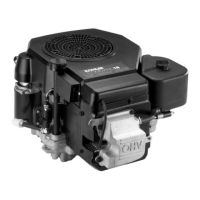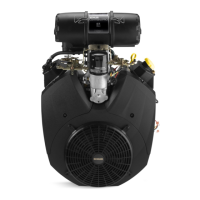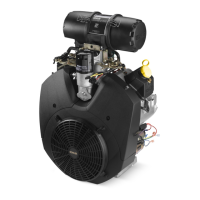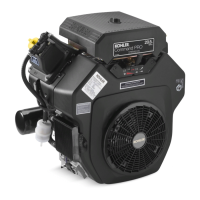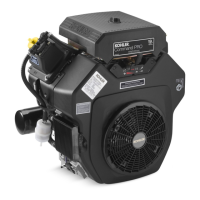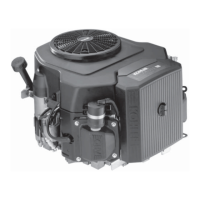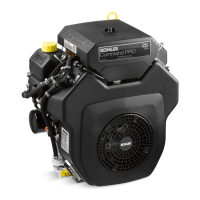7.3
Section 7
Electrical System and Components
7
Battery
General
A 12-volt ba ery with 400 cold cranking amps (cca) is
generally recommended for starting in all conditions.
A smaller capacity ba ery is o en suffi cient if an
application is started only in warmer temperatures.
Refer to the following table for minimum capacities
based on anticipated ambient temperatures. The
actual cold cranking requirement depends on engine
size, application, and starting temperatures. The
cranking requirements increase as temperatures
decrease and ba ery capacity shrinks. Refer also to the
operating instructions of the equipment this engine
powers for specifi c ba ery requirements.
Battery Size Recommendations
Temperature Battery Required
Above 32°F (0°C) 300 cca minimum
0°F to 32°F (-18°C to 0°C) 300 cca minimum
-5°F to 0°F (-21°C to -18°C) 300 cca minimum
-10°F (-23°C) or below 400 cca minimum
If the ba ery charge is insuffi cient to turn over the
engine, recharge the ba ery.
Battery Maintenance
Regular maintenance is necessary to prolong ba ery
life.
WARNING: Explosive Gas!
Ba eries produce explosive hydrogen gas while being
charged. To prevent a fi re or explosion, charge ba eries only
in well ventilated areas. Keep sources of ignition away from
the ba ery at all times. Keep ba eries out of the reach of
children. Remove all jewelry when servicing ba eries.
Before disconnecting the negative (-) ground cable, make
sure all switches are OFF. If ON, a spark will occur at the
ground cable terminal which could cause an explosion if
hydrogen gas or gasoline vapors are present.
1. Regularly check the level of electrolyte. Add
distilled water as necessary to maintain the
recommended level.
NOTE: Do not overfi ll the ba ery. Poor performance
or early failure due to loss of electrolyte will
result.
2. Keep the cables, terminals, and external surfaces
of the ba ery clean. A build-up of corrosive acid
or grime on the external surfaces can cause the
ba ery to self-discharge. Self-discharge occurs
rapidly when moisture is present.
3. Wash the cables, terminals, and external surfaces
with a mild baking soda and water solution.
Rinse thoroughly with clear water.
NOTE: Do not allow the baking soda solution
to enter the cells as this will destroy the
electrolyte.
Battery Test
To test the ba ery, you will need a DC voltmeter.
Perform the following steps (See Figure 7-2):
1. Connect the voltmeter across the ba ery
terminals.
2. Crank the engine. If the ba ery drops below 9
volts while cranking, the ba ery is too small,
discharged, or faulty.
DC Voltmeter
Battery
Figure 7-2. Battery Voltage Test.
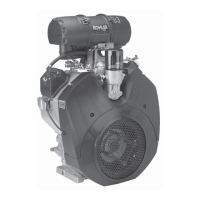
